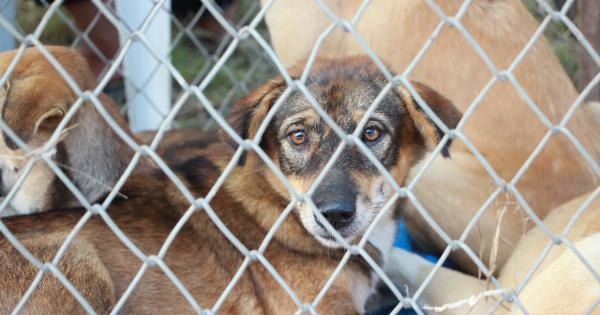Animal abuse is a serious issue that has gained significant attention worldwide. In order to combat this problem effectively, governments have implemented animal abuse laws.
These laws aim to provide animals with legal protection and promote their welfare. However, in order to understand and enforce these laws, it is important to clearly define what constitutes animal abuse. This article will outline the definition of animal abuse as established in various animal abuse laws.
What is Animal Abuse?
Animal abuse refers to any act of cruelty or harm inflicted upon animals. It encompasses both intentional and unintentional actions that cause physical, emotional, or psychological suffering to animals.
Animal abuse can take various forms, such as neglect, torture, killing, or using animals in inappropriate and harmful ways.
Understanding Animal Abuse Laws
Animal abuse laws vary across different jurisdictions, but they generally share common definitions and objectives. These laws are designed to prevent and punish instances of animal cruelty, provide legal rights for animals, and ensure their well-being.
We will now explore the key elements often included in animal abuse laws.
Cruelty and Harm
Animal abuse laws typically specify that any act that causes unnecessary suffering, distress, or harm to animals is considered animal cruelty. Tying, beating, burning, mutilating, or poisoning animals are commonly acknowledged as forms of cruelty.
These laws also encompass the neglect of animals, such as failure to provide appropriate food, water, shelter, or veterinary care.
Intentional and Negligent Acts
Animal abuse laws differentiate between intentional acts of cruelty and negligence. Intentional acts involve deliberate harm caused to animals, whereas negligence refers to a failure to provide adequate care or supervision leading to harm or suffering.
Both intentional and negligent acts can be considered forms of animal abuse.
Sentient Beings
Many animal abuse laws recognize animals as sentient beings, capable of experiencing pain, pleasure, and emotions. This recognition aims to ensure that animals are not treated as mere property but are accorded the respect and protection they deserve.
By considering them as sentient beings, the laws seek to prevent unnecessary suffering and promote the humane treatment of animals.
Protection for Different Animal Species
Animal abuse laws typically extend protection to a wide range of animal species, including both domestic and wild animals.
These laws commonly cover companion animals, such as dogs, cats, and horses, as well as farm animals like cows, pigs, and chickens. Some jurisdictions also include provisions for protecting wildlife and endangered species.
Prohibition of Specific Practices
Animal abuse laws often prohibit specific practices that are deemed inherently cruel or harmful to animals.
These may include activities like dogfighting, cockfighting, and bullfighting, as well as using animals in experiments without proper ethical considerations. Such laws aim to discourage and prevent these practices by imposing penalties and promoting alternative, ethical ways of interacting with animals.
Reporting and Enforcement
Animal abuse laws establish procedures and mechanisms for reporting instances of cruelty and enforcing the law.
These processes vary across jurisdictions but commonly involve reporting suspected cases to animal welfare organizations or law enforcement agencies. The legislation also outlines the roles and responsibilities of these organizations in investigating and responding to reports of animal abuse.
Penalties and Consequences
Animal abuse laws prescribe penalties and consequences for individuals found guilty of perpetrating animal cruelty. The severity of the punishment often depends on the nature and gravity of the offense.
These penalties may include fines, imprisonment, probation, mandatory counseling, or prohibitions on owning animals in the future. The aim is to deter potential offenders and ensure accountability for their actions.
International Frameworks
Besides national or regional laws, various international frameworks exist to address animal abuse and promote animal welfare.
Examples include the Convention on International Trade in Endangered Species of Wild Fauna and Flora (CITES), as well as the World Organization for Animal Health (OIE). These international agreements and organizations work towards harmonizing animal abuse laws globally and ensuring the protection of animals across borders.
The Role of Awareness and Education
Creating awareness and educating the public about animal abuse is fundamental to ensuring its prevention and enforcement of laws.
Animal welfare organizations and governmental bodies often conduct campaigns and initiatives to raise awareness about animal rights and the importance of reporting and combatting animal abuse. Such efforts play a vital role in fostering a culture of compassion towards animals and preventing future instances of cruelty.
Conclusion
Animal abuse laws define and address the various forms of cruelty and harm inflicted upon animals. These laws recognize animals as sentient beings, protected by rights that aim to prevent unnecessary suffering and promote their welfare.
The definition of animal abuse varies across jurisdictions, but common elements include intentional and negligent acts, protection for different species, prohibition of specific practices, reporting and enforcement mechanisms, penalties, and international frameworks. By understanding and enforcing these laws, we can work towards a more compassionate and humane treatment of animals in our society.






























